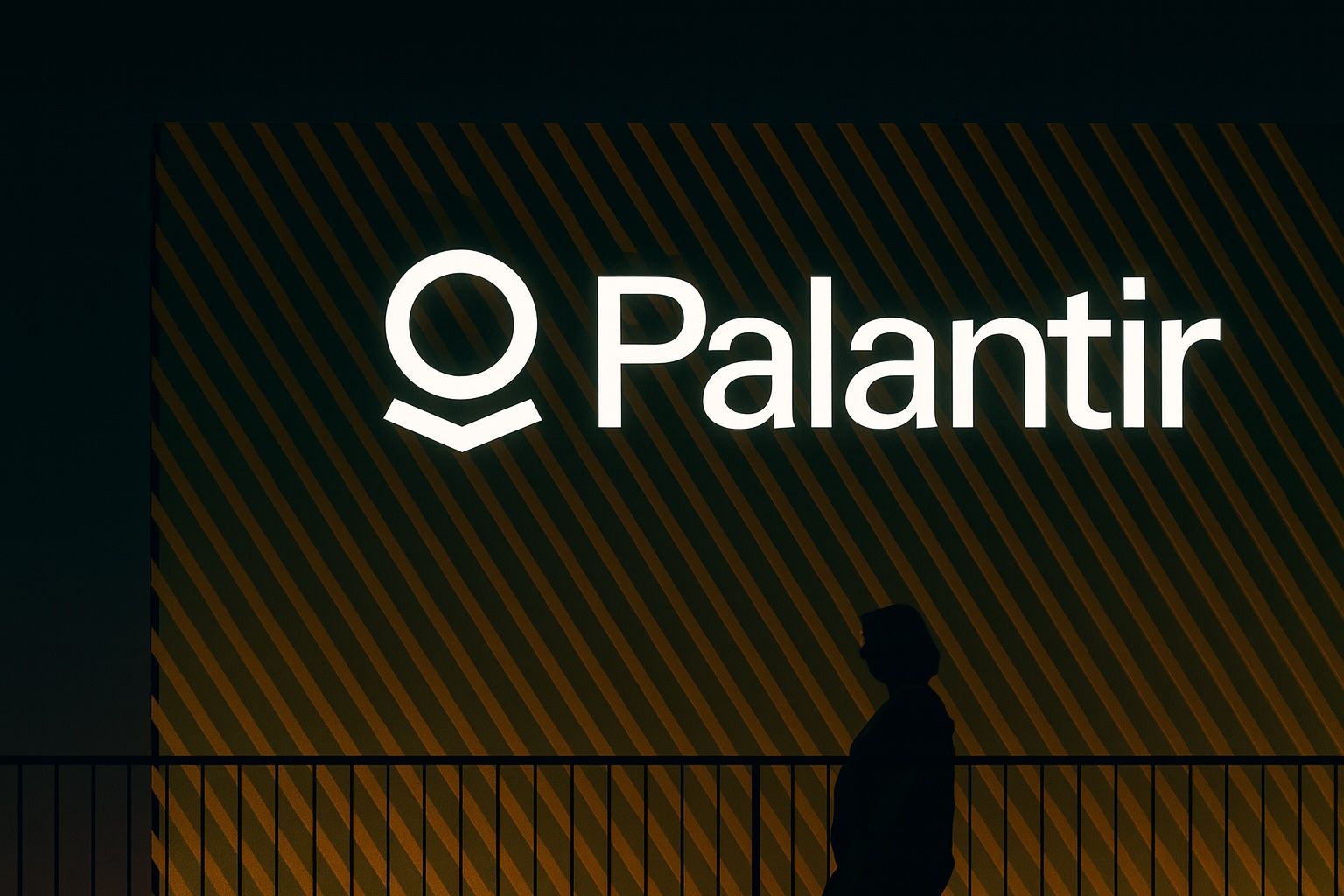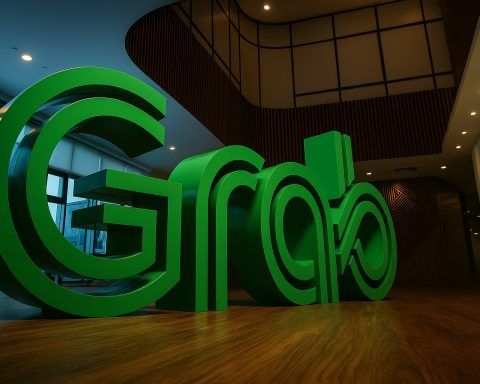- Palantir (PLTR) – The data analytics firm blew past Q3 estimates and hiked its outlook for the third consecutive quarter, citing “otherworldly” demand for its AI platform [1] [2]. Shares initially jumped ~5% after hours before settling modestly higher [3]. One analyst called Palantir “by far the best software company” that’s “raising the bar” each quarter [4].
- Hims & Hers Health (HIMS) – The telehealth provider reported mixed Q3 results (revenue beat, earnings miss) but revealed active talks with Novo Nordisk to offer its popular weight-loss drug Wegovy on the Hims platform [5] [6]. The Wegovy news overshadowed the earnings shortfall, sparking a ~7% after-hours stock surge [7] [8].
- Clorox (CLX) – The consumer products maker’s stock rose about 3% in extended trading even as quarterly sales plunged 19% amid an ERP software transition disruption [9] [10]. Investors largely brushed off the earnings miss, viewing the supply-chain hiccup as a one-time issue tied to the tech overhaul [11].
- Sarepta Therapeutics (SRPT) – Shares of the biotech plummeted over 20% after a key Duchenne muscular dystrophy drug trial failed to meet its primary endpoint [12]. The study (ESSENCE) showed some positive trends but not statistically significant benefits, raising questions about full approval for two RNA-based therapies [13]. Sarepta’s Q3 revenue actually beat forecasts at ~$399 million [14], but the trial results drove a heavy selloff.
- Sanmina (SANM) – The electronics manufacturing services company soared almost 18% post-market thanks to a big earnings beat and “blowout” guidance [15]. Sanmina projected next-quarter revenue of $2.9–$3.2 billion – nearly 40–50% above Wall Street’s $2.13B consensus [16] – stunning analysts and sending the stock to multi-year highs after hours.
Palantir Surges on Strong AI-Fueled Earnings
Palantir Technologies delivered a record third quarter, easily topping analyst expectations on both revenue and profit. The company’s revenue jumped 63% year-over-year to $1.18 billion, with adjusted earnings of $0.21 per share – well above estimates of about $0.17 [17]. CEO Alex Karp credited booming demand for Palantir’s Artificial Intelligence Platform, especially among commercial customers. U.S. commercial revenue more than doubled (+121% YoY) to $397 million, outpacing even robust growth in government contracts [18]. Karp hailed the commercial business as an “absolute juggernaut” and lauded the company’s “otherworldly” AI-driven growth in a letter to investors [19].
On the back of these results, Palantir raised its guidance for the third time this year. It now forecasts Q4 2025 revenue of $1.327–$1.331 billion, dramatically above the ~$1.18 billion consensus [20] [21]. Full-year 2025 revenue is expected to reach ~$4.4 billion, up from prior guidance of ~$4.15 billion [22]. This bullish outlook underscores Palantir’s momentum in the red-hot AI software arena. “They keep raising the bar for themselves,” observed Gil Luria, D.A. Davidson’s tech research chief, who called Palantir “by far the best software company” in its category [23].
Despite the stellar quarter, Palantir’s stock reaction was surprisingly muted – popping about 5% after the release then easing to a smaller gain by evening [24]. Analysts noted the stock had already run up over 170% year-to-date before earnings [25] [26], making some investors cautious about valuation. “There were worries Palantir’s rally left it overvalued, but these strong results could boost sentiment,” wrote Investopedia, pointing out that Palantir is among 2025’s top S&P 500 performers [27] [28]. With AI adoption driving real revenue and the company guiding for accelerating growth, many bulls argue Palantir’s premium is justified by its trajectory.
Hims & Hers Soars on Wegovy Deal Talks
Telehealth upstart Hims & Hers Health saw its stock skyrocket after hours, thanks to a surprise weight-loss drug announcement that excited investors. The company’s Q3 earnings itself were mixed – revenue of $599 million beat forecasts ($580M) but earnings of $0.06 per share missed estimates ($0.09) [29]. Subscriber growth remained strong at +21% YoY to nearly 2.5 million users [30]. However, the real highlight came when Hims revealed it is in “active discussions” with Danish pharma giant Novo Nordisk to offer Novo’s blockbuster obesity drug Wegovy (semaglutide) – including a forthcoming pill version – through the Hims & Hers platform [31] [32].
This potential partnership with Novo Nordisk – maker of Wegovy and Ozempic – sent HIMS shares up about 6–7% in extended trading [33]. Investors are optimistic that access to Wegovy could turbocharge Hims’ growth by capitalizing on the surging demand for weight-loss treatments. “We’re building a platform that gets more personal, more proactive, and resonates with more people as we scale,” Hims CEO Andrew Dudum said, emphasizing the company’s vision to reach “tens of millions” with convenient at-home care [34]. Weight-loss medications are a natural expansion of that vision, given the intense consumer interest in new GLP-1 drugs like Wegovy.
Notably, Hims & Hers had previously struck a deal with Novo Nordisk in early 2025 to offer Wegovy, only for Novo to abruptly end that collaboration in June amid disputes over Hims’ sale of compounded (copycat) semaglutide [35] [36]. The termination sent HIMS stock plunging ~32% at the time [37]. Now, a few months later, the two companies appear to be reconsidering terms. Hims reassured investors that discussions are ongoing and no final agreement is in place yet [38]. The market, however, is clearly betting that a renewed Wegovy partnership – done right – could be a win-win. Truist analyst Jailendra Singh cautioned back in June that losing Novo’s support might hurt Hims’ long-term credibility [39], but the mere prospect of a deal now has given the stock a new lease on life. Despite slightly soft Q4 guidance (Hims guided $605–$625M revenue vs ~$632M Street forecast) [40], the Wegovy-driven enthusiasm shows how “weight loss drug mania” is overshadowing short-term financials in this sector.
Clorox Rebounds Despite Steep Sales Slump
Consumer staples stalwart Clorox surprised the market by trading up after reporting a very rough quarter. In its fiscal Q1 2026 (Jul–Sep 2025) results, Clorox’s net sales plunged 19% year-on-year to $1.43 billion [41]. The plunge was largely self-inflicted: Clorox had implemented major shipping and operational changes in anticipation of a new ERP (enterprise resource planning) system go-live, which disrupted its supply chain and deliveries [42]. These one-time disruptions, along with some retailers drawing down inventories, drove an unusually sharp drop in sales and a corresponding hit to earnings [43].
Yet, rather than panic, investors looked past the messy quarter. CLX shares rose roughly 3% in post-market trading following the November 3 report [44]. The market’s reaction suggests confidence that Clorox’s slump is temporary and “partially due to a major software overhaul,” not indicative of permanent demand loss [45]. In other words, Wall Street expects much of the delayed sales to eventually be recouped now that the ERP system transition is complete. Clorox’s management had telegraphed these issues in advance and assured that underlying consumer demand for its brands (from bleach and cleaning wipes to salad dressings) remains solid.
It also helped that Clorox’s results weren’t a total washout. Even with the 19% sales decline, the company managed to significantly improve margins year-on-year, thanks to prior price hikes and cost cuts, according to The Wall Street Journal [46]. Clorox also maintained its full-year outlook, implying a rebound in coming quarters as operations normalize. “Investors appear to be brushing off this quarter’s lower sales as an anomaly tied to the ERP upgrade,” noted Yahoo Finance in live coverage [47]. With the stock down about 8% over the past year heading into earnings [48], a sigh of relief was evident as Clorox avoided any new negative surprises. The focus now shifts to whether the company can win back shelved sales and restore growth in the holiday quarter.
Sarepta Slides as Drug Trial Disappoints
Shares of Sarepta Therapeutics – a leader in genetic medicines for Duchenne muscular dystrophy (DMD) – plunged 22% after hours when the company revealed discouraging clinical trial news. Sarepta announced that its Phase 3 ESSENCE study, a confirmatory trial for two exon-skipping DMD therapies (Vyondys 53 and Amondys 45), did not achieve statistical significance on its primary endpoint [49]. The trial was meant to demonstrate a clear functional benefit (measured by a 4-step stair-climbing test over 96 weeks) to support full FDA approval of the drugs. Failing to hit the primary goal is a setback – one that “overshadows” an otherwise decent quarter for Sarepta’s current business.
Not all the trial news was negative. Sarepta reported “positive trends favoring treatment over placebo” in the ESSENCE study, even if the results fell short of definitive proof [50]. “We believe the results demonstrated a clear treatment effect, showing clinically meaningful functional outcomes,” said Louise Rodino-Klapac, Sarepta’s President of R&D, emphasizing that many DMD patients on the drugs still showed improvements over those on placebo [51]. The company plans to work with the FDA on a path to traditional approval despite the missed endpoint, potentially by analyzing additional data or endpoints [52] [53].
In the meantime, investors are nervous. The ESSENCE trial was critical to expanding the label (and sales) of Vyondys 53 and Amondys 45, which are already conditionally approved. Without a clear win in ESSENCE, these drugs could face usage limitations or competition from emerging gene therapies. Sarepta’s stock selloff also came despite solid financials – the company’s Q3 net product revenue hit $370 million (above expectations), and it beat on the top line while posting an adjusted loss per share of $1.80 [54]. Sarepta even raised its full-year revenue guidance slightly. But for biotech investors, pipeline news often far outweighs quarterly numbers. This after-hours drubbing shows that clinical trial outcomes – especially for high-stakes therapies in rare diseases – can drastically swing a biotech’s fortune in minutes. Analysts expect volatile trading ahead as Wall Street awaits clarity on if and how Sarepta can salvage broader approval for its DMD treatments.
Sanmina Spikes on Blowout Guidance and Earnings Beat
Rounding out the after-hours rollercoaster was Sanmina Corp, which delivered a pleasant surprise for investors. Sanmina, a lesser-known tech manufacturer that provides electronics assembly and supply-chain services, saw its stock rocket 18% higher in post-market action. The catalyst was an extremely strong earnings report for the quarter ended September, capped by much higher-than-anticipated guidance for the upcoming quarter [55].
Sanmina’s Q4 FY2025 (calendar Q3) results handily beat analyst estimates, indicating robust demand across its customer base. But the real eye-opener was management’s outlook. Sanmina told investors it expects Q1 FY2026 revenue of $2.9–$3.2 billion, which it called a “blowout” forecast given Wall Street was expecting only about $2.13 billion [56]. Hitting the midpoint of Sanmina’s guidance range would imply ~45% sequential growth – an astonishing jump for a manufacturing firm of its size. Executives also issued upbeat earnings guidance alongside the sales surge. Such a big leap suggests Sanmina may have landed major new programs or orders (potentially related to enterprise hardware or AI infrastructure, according to industry chatter) that will ramp up rapidly in the next few months.
The magnitude of the guidance surprise sent analysts scrambling to raise their estimates. It’s uncommon to see a stable mid-cap like Sanmina projecting this level of outperformance, and the stock’s after-hours move reflected that shock and optimism. Prior to the earnings, Sanmina shares had been relatively flat in 2025, so this news caught the market off guard in a positive way. “Blowout guidance” of this kind, as reported by Investing.com, can be a game-changer [57]. If Sanmina delivers on the high end of its $3.2B revenue forecast, it would mark one of the strongest quarters in company history. Investors will be watching closely to see if this is the start of a sustained growth trend – perhaps driven by new tech product cycles – or a one-off spike. For now, Sanmina’s management has earned the benefit of the doubt, and shareholders are cheering one of the day’s biggest after-hours winners.
Sources: Palantir, Hims & Hers, Clorox, Sarepta and Sanmina after-hours news from CNBC/Yahoo Finance [58] [59]; Investopedia, Benzinga and company reports for earnings details [60] [61]; Reuters and GuruFocus for context and expert quotes [62] [63].
References
1. www.investopedia.com, 2. www.investopedia.com, 3. www.investopedia.com, 4. stockanalysis.com, 5. www.investing.com, 6. www.benzinga.com, 7. www.investing.com, 8. www.benzinga.com, 9. stockanalysis.com, 10. finance.yahoo.com, 11. finance.yahoo.com, 12. www.investing.com, 13. www.investing.com, 14. www.gurufocus.com, 15. www.investing.com, 16. www.investing.com, 17. www.investopedia.com, 18. www.investopedia.com, 19. www.investopedia.com, 20. www.investing.com, 21. www.investopedia.com, 22. www.investopedia.com, 23. stockanalysis.com, 24. www.investopedia.com, 25. www.investopedia.com, 26. www.investopedia.com, 27. www.investopedia.com, 28. www.investopedia.com, 29. www.benzinga.com, 30. www.benzinga.com, 31. www.investing.com, 32. www.benzinga.com, 33. www.benzinga.com, 34. www.benzinga.com, 35. www.reuters.com, 36. www.reuters.com, 37. www.reuters.com, 38. www.investing.com, 39. www.reuters.com, 40. www.benzinga.com, 41. stockanalysis.com, 42. stockanalysis.com, 43. www.zacks.com, 44. finance.yahoo.com, 45. finance.yahoo.com, 46. stockanalysis.com, 47. finance.yahoo.com, 48. finance.yahoo.com, 49. www.investing.com, 50. www.investing.com, 51. www.gurufocus.com, 52. www.gurufocus.com, 53. www.gurufocus.com, 54. www.gurufocus.com, 55. www.investing.com, 56. www.investing.com, 57. www.investing.com, 58. finance.yahoo.com, 59. www.investing.com, 60. www.investopedia.com, 61. www.benzinga.com, 62. www.reuters.com, 63. www.gurufocus.com




